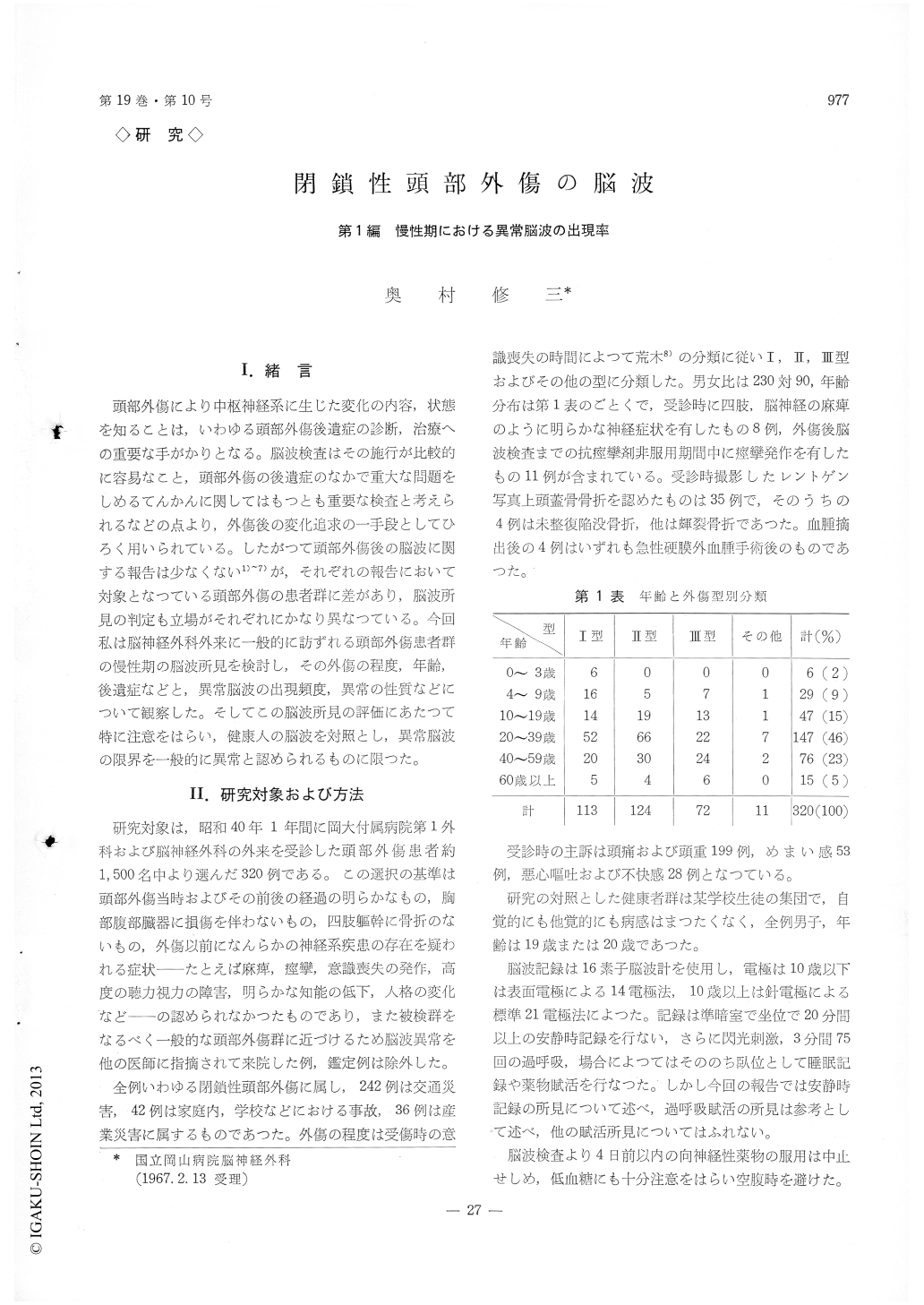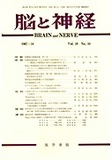Japanese
English
- 有料閲覧
- Abstract 文献概要
- 1ページ目 Look Inside
I.緒言
頭部外傷により中枢神経系に生じた変化の内容,状態を知ることは,いわゆる頭部外傷後遺症の診断,治療への重要な手がかりとなる。脳波検査はその施行が比較的に容易なこと,頭部外傷の後遺症のなかで重大な問題をしめるてんかんに関してはもっとも重要な検査と考えられるなどの点より,外傷後の変化追求の一手段としてひろく用いられている。したがつて頭部外傷後の脳波に関する報告は少なくない1)〜7)が,それぞれの報告において対象となっている頭部外傷の患者群に差があり,脳波所見の判定も立場がそれぞれにかなり異なつている。今回私は脳神経外科外来に一般的に訪ずれる頭部外傷患者群の慢性期の脳波所見を検討し,その外傷の程度,年齢,後遺症などと,異常脳波の出現頻度,異常の性質などについて観察した。そしてこの脳波所見の評価にあたつて特に注意をはらい,健康人の脳波を対照とし,異常脳波の限界を一般的に異常と認められるものに限つた。
The EEG of 320 closed head injury cases was re-corded in the standard fashion in their chronic stage between 1 month to 12 monthes after the injury. The resting not activated record was evaluated ac-cording to the normal control record of 82 healthy persons.
Five % of all head injury cases showed intermit-tent abnormality and 18% showed continuious abnor-mality. The incidience of abnormal was higher in groups those had skull fracture, positive gross neurol-ogical sign, history of convulsion, or experience of surgery for acute intracranial hematoma. But no relation was observed between the incidence of EEG abnormality and the duration of post-traumatic un-consciousness.
Intermittent abnormality was frequent (23%) in the group younger than 9 year old, and continuious abnormality was higher (30%) in the group 10-19 year old. Both type abnormalities showed low incidence in aged groups. Then, it was suggested that post-traumatic EEG abnormality may depend on both se-verity of the injury and sensitivity of the brain under influence of the age.
The presence of 5% intermittent abnormality may suggest considerable number post-traumatic epilepsy in the common closed head injury.

Copyright © 1967, Igaku-Shoin Ltd. All rights reserved.


